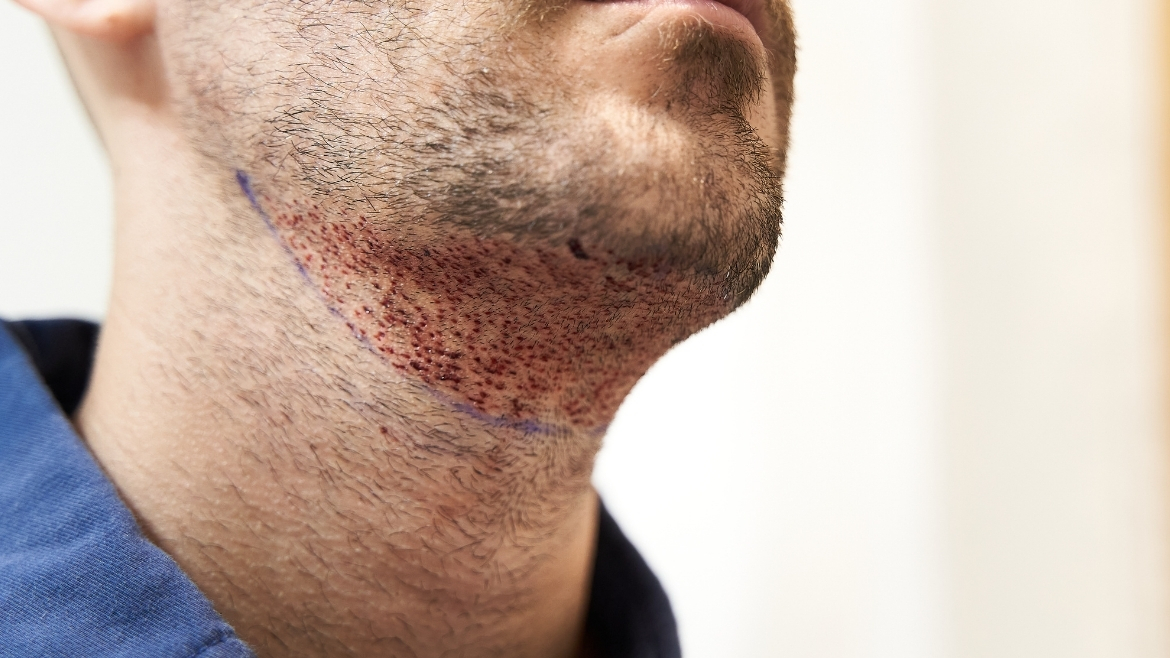Donor Area:
- For mustache and beard transplantation, areas with dense hair, such as the nape of the neck or beard line, are generally used as donor areas.
- Hair follicles taken from these areas are transplanted to the mustache and beard area.
FUE and FUT Techniques:
- Follicular Unit Extraction (FUE): A more modern and minimally invasive technique that involves extracting and transplanting hair follicles one by one.
- Follicular Unit Transplantation (FUT): It is a technique commonly used in hair transplantation and involves removing the follicles by removing a strip of the scalp.
Anesthesia and Surgical Process:
- Mustache-beard transplantation is usually performed under local anesthesia.
- In the FUE technique, hair follicles are removed with a special microsurgical instrument and transplanted to the mustache or beard area.
Healing Process:
- After surgery, short-term swelling, redness and crusting may occur in the mustache and beard transplantation area.
- The full recovery process may vary depending on individual factors, but is usually completed within a few weeks.
Results and Permanence:
- The transplanted hair grows and grows naturally as it is taken from the donor area.
- The hair falls out in the first few weeks, then new hair begins to grow.
- Permanent results are achieved because the transplanted hair usually does not fall out.
Eligible Candidates:
- Mustache-beard transplantation is generally considered for individuals who have a missing mustache or beard area due to genetic reasons, burn scars, scars or other reasons.
- Candidates who have a good donor area and are suitable for surgery generally achieve successful results.
Mustache-beard transplantation is an increasingly popular procedure in the field of plastic surgery and can help individuals achieve the look they want. However, a suitable surgeon and a good evaluation process are important.


